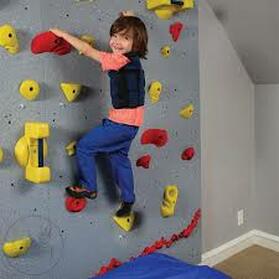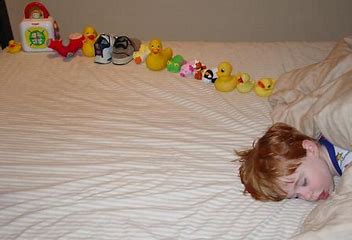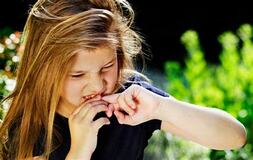3. SIRS-ACTIVITY
c. Seeking Behavior
'Sensory seeking' behavior has its own criteria which is the ASD brain craving more sensory stimuli than what it is already getting. But, sensory ‘seeking behavior’ also includes ‘sensory avoidance’ behavior, as you will see.
Sensory Seeking Behavior –
Bogdashina & Casanova (2016) introduce us to sensory ‘seeking behavior’ by saying that sometimes the brain just seeks more sensory stimuli, like when we feel more comfortable having ‘white noise’ in the room while we’re reading. Each person it seems has different thresholds for their sensory seeking needs.
The problem comes in when that 'need', or ‘sensory seeking’ leads to inattentive or overfocused behavior, due to the inability of the person to modulate their needs. They say that ‘sensory seeking’, ‘sensory craving’ are very common in autism. This can also seem to be influenced by the person’s high or low energy and/or activity levels.
Typical ‘sensory seeking’ behaviors, as these authors see it, are those seeking sensory input by twirling, chewing, and needing constant auditory input (sounds). In a play setting, the ‘sensory seeking’ child will choose to play roughly with nearby individuals.
Kranowitz (2006) gives examples of recognizable ‘sensory seeking’ behaviors –
- Splashing in mud, seeking types of play in dirt
- Dumping toy bins rummaging through them aimlessly
- Chewing on objects or clothing
- Rubbing against walls or furniture and bumping into people
- Loves spinning in circles, amusement rides, and is constantly moving
- Fidgets, has difficulty sitting still and takes bold risks
- Frequently wants bear hugs and vigorous playground activities
- Seeks visually stimulating things, shiny objects, strobe lights, or sunlight
- Loves loud noises, TV or music volume, crowds and places with lots of action
- Problems sleeping
- Enjoys strong odors, even unattractive ones
- May lick or taste inedible objects and prefers spicy or hot foods
- Frequently attempt to engage in rough play, such as wrestling
Sensory ‘seeking behavior’ has its own criteria which also includes ‘sensory avoidance’ behavior. This behavior may preclude persons from a natural social interaction with others, because they tend to avoid some, but not all, of the following sensory experiences; according to Green, et al. (2016) –
Sensory Avoidance Behavior –
Tactile avoidance:
- Touching or getting too close to someone
- Being groomed or grooming self
- Going barefoot
- Being splashed with water
- Rubbing or scratching a spot that’s been touched
- Certain foods
- Certain tastes
- Certain textures or temperatures
- Covers mouth or won’t open it
- Feet leaving the ground
- Heights
- Being tipped upside-down
- Holds on to things
- Distracted by noise (near or far away)
- No background noise
- Doesn’t respond to name when s/he hears it called
- Covers ears
- Refuses eye contact
- Bothered by lights
- Concerned with a lot of movement
- Covers eyes
Amanda Morin (2018) feels that most ‘sensory seekers’ are undersensitive (hyposensitive). They look for more sensory stimulation in order to make them feel less sluggish and more ‘in their bodies’ and ‘in their space’. They may stand too close, keep touching people or objects, like loud noises, and chew on whatever is handy.
Saying that there are also ‘sensory avoiding’ (hypersensitive) kids that experience sensory input more intensely.
They avoid it because it’s overwhelming to them. They may seem timid, be picky eaters, and be fussy about what they wear. They may be able to calm themselves down… or, may have many, many meltdowns, because they cannot cope with tactile, visual, taste, and noise sensitivity.
< My Thoughts > “…fussy about what they wear.”
“Keep your clothes on until Mom or Dad tells you to take them off!” Smiles.
Morin continues, “It’s not always one or the other.” Some kids show a combination of the two reactions, both 'hyper' and 'hypo' reactivity. She says that responses can change based on their level of arousal or ability to self-regulate. That knowing your child’s reactions and triggers can help. Amanda Morin – classroom teacher and early intervention specialist. www.everythingkidslearning.com
Mays, et al. (2011) tell us that it becomes critical for teachers to intervene and decrease or replace self-stimulatory behaviors so the student may attend to instruction and learn new skills.
Bobby’s teacher laments, “He is constantly rocking, flapping his hands, and hopping in his chair!” When a student is engaged in ‘stereotypy’, it can be difficult to gain his or her attention or engage him or her in a learning activity because of the reinforcing nature of the self-stimulatory behavior. Note: One of the defining characteristics of autism is the presence of ‘stereotypy’ behavior. This is a behavior, which when it is repetitive, does not appear to serve a purpose and appears inappropriate for the environment.
This teacher, Mays relates, one day decides to let Bobby jump on the trampoline before reading group. This helps, but still his rocking time is up to 30 minutes. She tries replacing the trampoline jumping with rocking in a rocking chair. This slower, more controlled movement works so well, she lets him sit in it and rock during reading group. He is now completing more assignments and participating in class activities more frequently without rocking.
==============
NOTE: Next time... 4. EP-ACTIVITY (Enhanced Perception).
READ MORE... Click below =>



 RSS Feed
RSS Feed